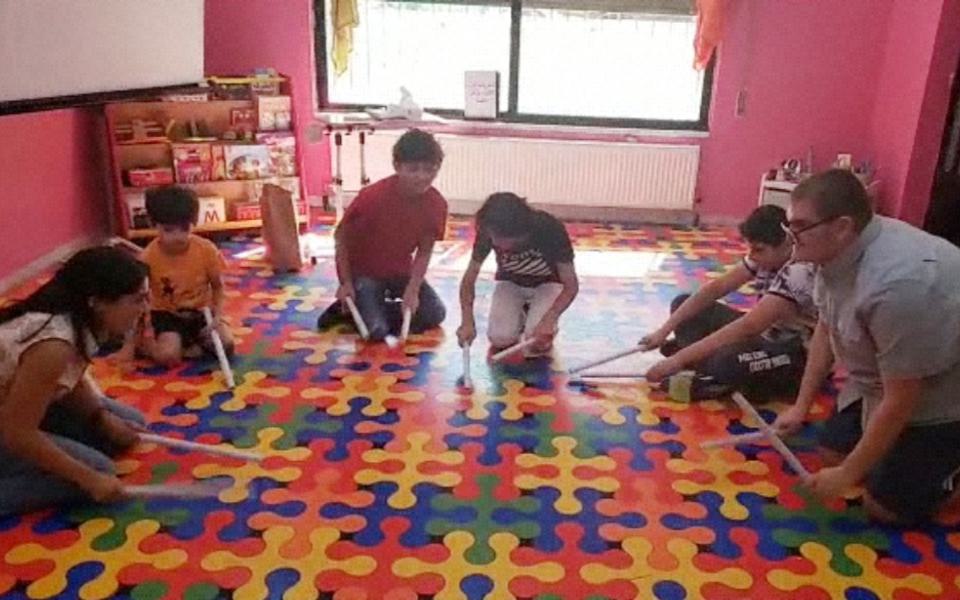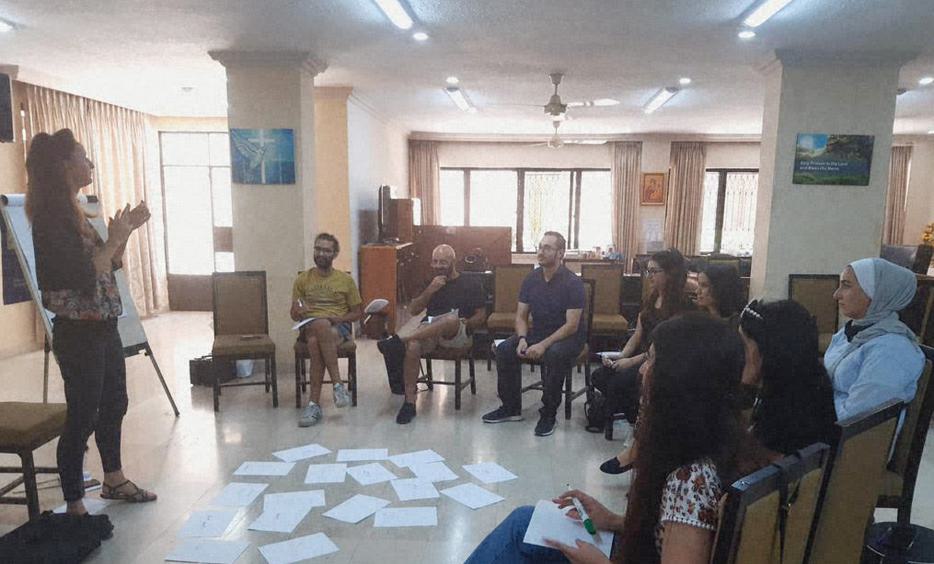
Supported by Soka Gakkai and run by Musicians Without Borders, the Al-Musiqa Tajm’ana: “Music Brings Us Together” program in Jordan has successfully completed its first year. This three-year program, launched in January 2021, aims to create a network of musicians, social workers and teachers who are equipped with the skills to use music as a tool for strengthening social inclusion, stimulating creative development and bringing hope and joy to children in underserved refugee and host communities.
Fabienne van Eck, Regional Program Manager for the Middle East for Musicians Without Borders (MWB), and Jordanian musician Tareq Jundi, assistant trainer for the project, reported in November 2021 that MWB had gathered 12 musicians and recently graduated music students to take part in the first training cycle held in Amman. The first group of trainees received 30 hours of training over two training periods, mostly face to face despite the pandemic. The next group of 15 music teachers received training in group teaching. A third cycle included a group of youth workers and teachers for training that accommodated their specific needs.

Musicians Without Borders training session © Seikyo Shimbun
Caritas Jordan, whose “Music for Peace” program brings music to children in Amman and other Jordanian cities, is the program’s primary local partner. Training focuses on trauma awareness, self-care and non-violent communication, aiming to contribute to alleviating stress among children and strengthening their ability to overcome difficulties. It focuses on didactic, pedagogical and leadership skills; group work with vulnerable children; teamwork; and conflict resolution. Musicians and community leaders gained tools and techniques to create spaces of safety, connection and creativity.
Each trainee then implemented several sessions with children or other vulnerable groups such as women in a shelter for victims of violence. Jundi noted how impressed he was that the program’s training fully focuses on meeting the needs of the children, rather than on technical skill. “One aspect was how to make the child improvise from day one, to feel that he is in a safe environment and to start to improvise and to express.”
In its second year, the program will expand their audience to include caretakers of children with special needs as well.